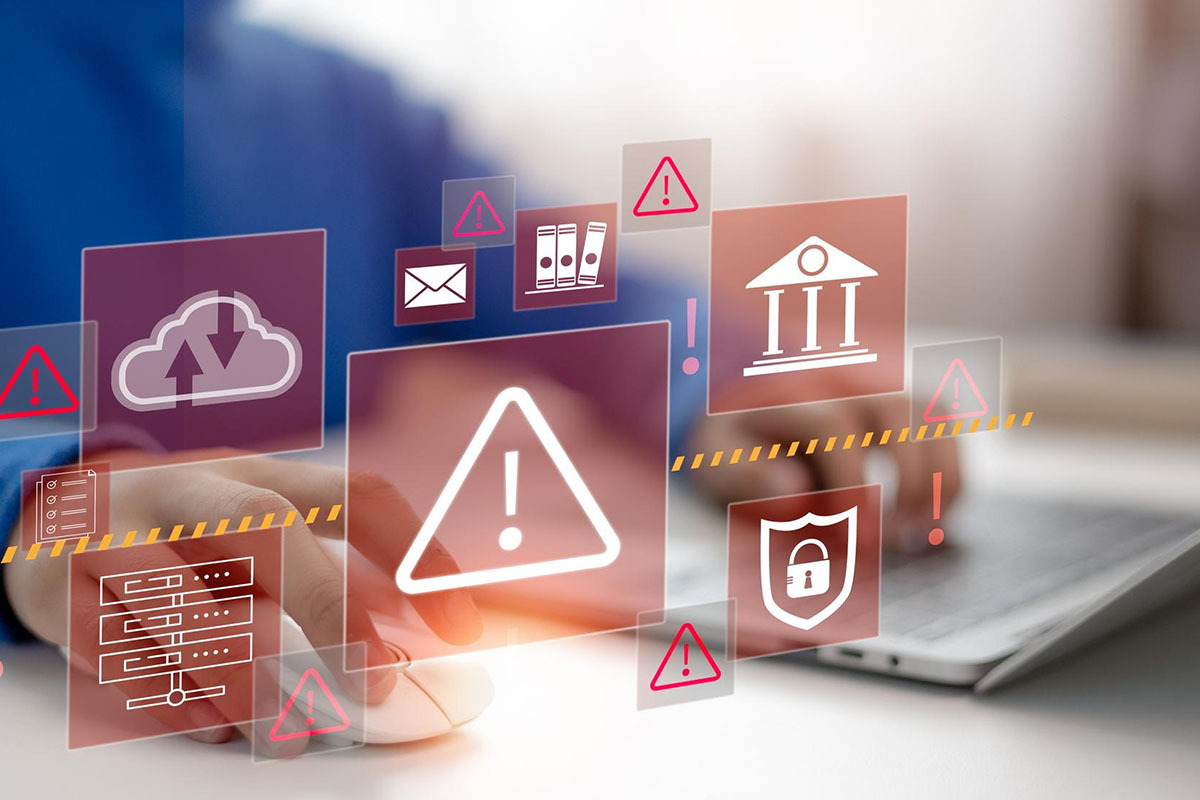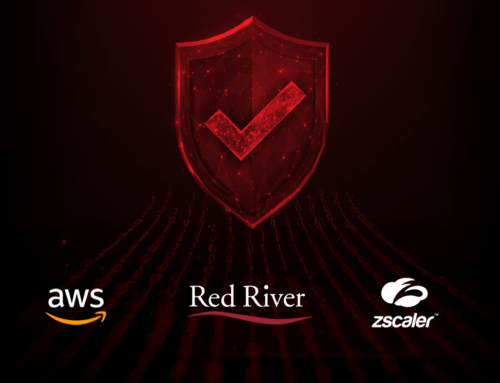
What Is Secure Access Service Edge (SASE)?
As growing companies continue to diversify the way they store and access digital resources, they’re also stretching data security measures. When using multiple cloud providers, software-as-a-service opportunities all seem to make good business sense on the surface. However, unless adopting these and other efficient solutions comes with enhanced cybersecurity, they could prove costly.
That’s largely because expanding operations and services also enlarge an organization’s attack surface. The more places an operation stores data or allows users to log into a network, the thinner the walls that keep hackers at bay. One of the innovative ways to harden the attack surface and keep valuable and sensitive information safe involves a secure access service edge (SASE).
The cybersecurity approach has been gaining steam in recent years. According to research, secure access service edge market growth is expected to exceed $15.25 billion by year’s end. It’s also on track to balloon to more than $44.6 billion by 2030. There are good reasons for its growing popularity.
The Rise of Secure Access Service Edge
The phrase “secure access service edge” was embedded in a 2019 Gartner article called: “The Future of Network Security Is in the Cloud.” In it, analysts Neil MacDonald, Lawrence Orans and Joe Skorupa noted the following:
“Digital business transformation inverts network and security service design patterns, shifting the focal point to the identity of the user and/or device — not the data center. Security and risk management leaders need a converged cloud-delivered secure access service edge to address this shift.”
Now routinely called SASE, it marked a pivotal moment in which cybersecurity and managed IT professionals began changing the way they saw and addressed threats in the digital landscape. Instead of investing the lion’s share of resources and efforts toward defending a business network’s perimeter, entry points became much more concerning. With remote workforces on the rise and organizations dropping on-premises networks for cloud-based services, the devices and login credentials used to gain access to systems emerged as the weakest link.
As we are all well aware, the pandemic created a seismic shift that drove millions of people out of brick-and-mortar buildings and into home offices. The heightened need for secure cloud infrastructure, endpoints and login credentials appears to have fast-tracked the adoption of SASE.
What is SASE?
The SASE model offers businesses a way to combine seemingly disjointed infrastructure into a unified cloud-based network that delivers determined security features. Rather than concern itself with traditional perimeter defenses, it hardens the cloud edge. Designed to deter, detect, isolate and expel threat actors, it helps simplify data security by providing consistently secure access from any location, device or login profile. These are the key components of a SASE cybersecurity system.
Zero Trust Network Access
The Zero Trust Network Access (ZTNA) approach operates under the assumption that no device can be trusted when attempting to gain entrance. Including office desktops in plain view, a good catch phrase for ZTNA might be “never trust, always verify.” The security measure employs next-gen technology to check a device’s identity and location before green-lighting access.
In terms of data protection, that’s a reasonable way to handle the wide-reaching laptops, tablets and cellular phones that attempt to log in on a daily basis. That’s because data thieves work relentlessly to seize control of or mimic devices and burglarize your network.
Once an endpoint has been approved and the user’s login credentials have passed muster, other elements of zero trust serve as a safeguard. Zero trust measures include limiting user access to only the digital assets needed to complete tasks and achieve organizational goals. Should a cybercriminal get hold of a team member’s device and skirt frontline defenses, such as multi-factor authentication, the intruder cannot exceed the parameters placed on the profile.
Software-Defined Wide Area Network (SD-WAN)
The underlying reason SASE enjoys such popularity rests on the fact that cloud-based business networks do not necessarily have a physical location. They are vast, digital data organizing systems. An SD-WAN helps optimize the wide area network by directing internet traffic. Rather than using routers to make decisions about data movement, it utilizes a variety of software packages. These are ways SD-WAN delivers centralization and optimization benefits.
- SD-WAN uses a wide range of connections
- Syncs with multiple services
- Chooses an efficient digital pathway
- Steers network traffic
- Maintains centralized management
The performance-enhancing aspects of SD-WAN improve efficiency and save money. While it does not directly deter, detect or expel threats, it seamlessly integrates firewalls, protection measures and data encryption, among others.
Cloud Access Security Broker (CASB)
This cybersecurity element navigates the space between cloud users and providers. It helps enforce data protection policies through transparency. This is the three-step method a CASB utilizes.
- Auto-Discovery: This feature compiles all cloud services being used by the organization and unique users.
- Classification: Risk levels are determined for each cloud application in use. This task is accomplished by analyzing the application, type of data and ways it’s being employed or shared.
- Remediation: The CASB tools assign a risk to each open application and take action if it runs contrary to company data protection policies.
It may prove helpful to think of CASB as a checkpoint. Let’s say you’re driving to Montreal, and Canadian officials stop your vehicle and check your passport or Real ID. A Cloud Access Security Broker serves the same basic function as someone checking passports. It resides between the user and cloud-based resources to ensure only trusted access occurs. Much like a firewall, it adds a layer of protection for sensitive and valuable digital assets.
Secure Web Gateway (SWG)

This cybersecurity measure protects a company from web-based threat actors by enforcing critical data protection policies. An SWG serves as a digital gatekeeper that stands between network users and unknown internet entities. It examines and screens traffic to ensure malware and certain types of content do not come in contact with the operation’s system. By blocking malicious web pages, software and applications, SWG helps organizations meet or exceed regulatory compliance directives.
Firewall as a Service (FWaaS)
The cybersecurity measure provides businesses with sophisticated, subscription-based firewalls. Rather than fall back on firewalls established within physical hard drives, FWaaS providers offer the data security protection in the cloud. Firewall as a service solution is designed to mesh with cloud infrastructure to enhance the following.
- Access Controls
- Prevent Intrusions
- Detect Threats
- Simplify Cloud Network Management
Like other ongoing services, FWaaS offers organizations the flexibility and scalability necessary to proportionally invest in cybersecurity and enforce company policies.
Key SASE Benefits Worth Considering
Recent reports indicate that nearly 80 percent of organizations anticipate integrating a security service edge (SEE) or security access service edge within the next two years. The driving reason for this shift in cybersecurity policy involves the prioritization of Zero Trust Network Access. Upwards of 46 percent of companies plan to couple their adoption of zero trust with a security service edge. These rank among the key benefits SASE delivers.
Implementing Zero Trust Architecture
The SASE system delivers an ideal framework for implementing zero trust protocols. It guarantees that every user and device is subjected to strict scrutiny and verification before gaining ingress to a digital network. When fully in place, zero trust drastically reduces the number of data breaches suffered by organizations.
Regulatory Compliance
Enterprises gain a valuable data protection asset when pivoting to SASE. It supports the compliance of local, state, national and international data protection requirements. As a data handling advantage, it allows organizations to house and transfer digital information in accordance with prevailing mandates. Employing SASE also reduces the risk of incurring penalties and fines due to non-compliance.
Global Threat Intelligence
By working in concert with tools such as CASB, ZTNA and SWGs, Secure Access Service Edge provides the real-time global threat intelligence businesses require. It detects, deters, analyzes and helps expel hacking threats before they can pilfer off valuable and sensitive data. Operations also gain quick responses to dangers posed by malware and phishing schemes.
Enhanced Network Visibility and Control
Because SASE consolidates wide-reaching monitoring tools into a single dashboard, it delivers rare insights. You can monitor suspicious activity, application usage and analyze the flow of data. Along with removing potential blind spots, it offers early-detection alerts that give security professionals the jump on intruders. Managed IT professionals enjoy data visibility improvements that support efforts to maximize productivity and ensure compliance.
Helps Cure IT Challenges
It’s not unusual for complex hybrid cloud systems to make the goal of seamlessly managed IT an uphill climb. Sometimes plagued by poor user experience, buffering, connectivity interruptions, cybersecurity shortfalls and unreliable cloud access rank among the major headaches IT teams face. Fortunately, secure access service edge organizes networking and data security elements into an efficient and unified structure. By reducing glitches and setbacks, users experience seamless connectivity and IT staff members can stop spending their valuable time putting out fires.
How to Switch to SASE
Switching to SASE is a proactive measure that can serve industry leaders well. The benefits, hardened attack surface and scalability are reasons why an increased number of organizations are fast adopting SASE. These are routine steps for upgrading to SASE.
- Evaluate Your Existing Infrastructure
- Identifying Security Gaps
- Choose the Right SASE Solution
- Roll Out a SASE Pilot Program
- Gather Intel and Feedback
- Make Adjustments and Integrate Tools
It’s also important to invest in cybersecurity education and training. Your staff members will be better equipped to identify phishing schemes and other threats. Rather than frontline workers being the operation’s weakest link, they can be a powerful part of the cybersecurity defense.
Is Adopting SASE Necessary?
There are a variety of cybersecurity postures an organization can take with regard to cloud-based data protection. The SASE opportunity delivers significant benefits, particularly when it comes to point-of-entry security. When login credentials are employed to enter your network, that constitutes a critical moment. Either a bad actor will gain access or be deterred due to the comprehensive approach provided by SASE. While less effective security options may be available, these are reasons to work with a firm that possesses SASE expertise.
- Overcomes Perimeter Security Limitations: Outdated cybersecurity architecture once sought to defend against network-based data breaches. The SASE approach flips the script to focus on entry points and endpoint devices while supporting other protections.
- Secure Remote Connectivity: Enterprises have embraced hybrid and fully remote workforces in recent years. That being said, connecting with a variety of devices from home, coffee shops, libraries and other locations tasks companies to ensure bad actors cannot leverage usernames and passwords. The SASE solution ensures that only authorized personnel can access the network from approved devices.
- Cloud Migration: Taking advantage of the savings and efficiency associated with cloud-based businesses cannot be enjoyed unless you have a data security plan in place to make the move. Accepting a SASE solution gives industry leaders the cybersecurity program they need to leave antiquated on-premises networks behind.
- Newly Minted Threats: The threats against honest businesses are constantly evolving. SASE helps business entities to adapt to new threats and overcome inherent vulnerabilities quickly. It’s mission-critical to remain ahead of cybercriminals.
From individual users to enterprise efficiency and cost savings, SASE delivers a positive user experience across the board. It helps harden the attack surface, simplify compliance and alleviate common managed IT problems. The solution also supports utilizing zero trust principles and other data security measures.
Contact Red River for Secure Access Service Edge Solutions
The SASE system gives organizations a way to pull together a variety of effective cybersecurity options and utilize them under one roof. The approach makes it easier to meet or exceed data protection mandates while ensuring endpoint devices are properly vetted, and login credentials include restrictions.
At Red River, we understand the importance of protecting digital assets by implementing a SASE solution. We collaborate with companies to provide effective, scalable managed IT and cybersecurity consulting. Contact us today by calling or filling out our online form. Let’s get the process started!

written by
Corrin Jones
Corrin Jones is the Director of Digital Demand Generation. With over ten years of experience, she specializes in creating content and executing campaigns to drive growth and revenue. Connect with Corrin on LinkedIn.




